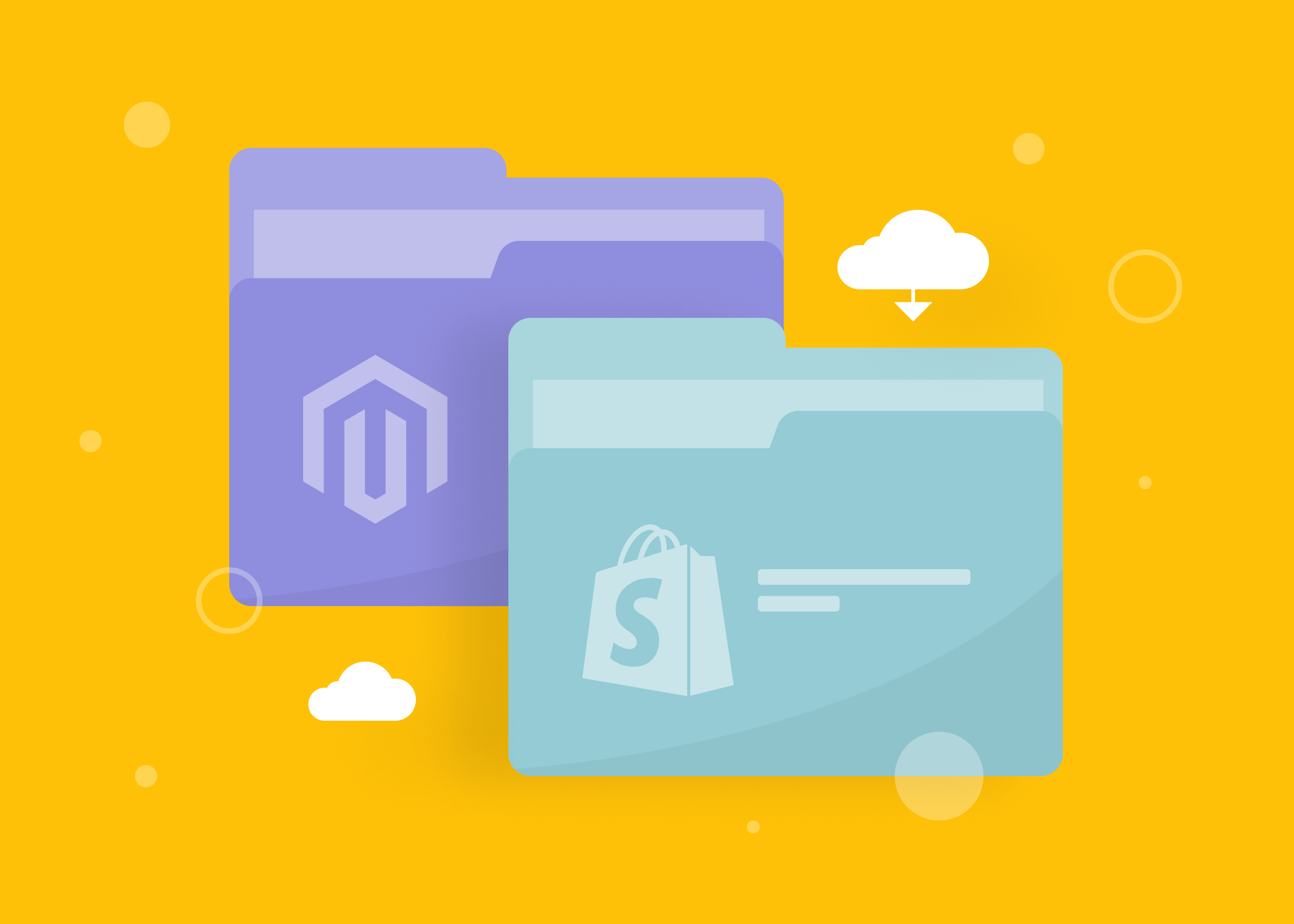Content
Why Is It Critical to Upgrade Your Magento Minor Version and How to Do It?

Time to read: 20 minutes
Providing the best experience for your customers is the primary goal of any online business if you want to grow and generate more profit. Therefore, updating your Adobe Commerce platform will be crucial to your success if you’re going to keep your e-commerce store safe, productive, and reliable.
When you’re running an e-commerce store, it’s important to stay safe and up-to-date. You should always keep an eye on the latest version of Magento 2 and update it in a timely manner. Not many business owners understand the purpose of a new update release and doubt whether it is worth doing. So, in this article, we will tell you why it is crucial to upgrade the Magento minor version and how your business will benefit from such an upgrade. Also, one of our certified Magento developers will share 3 ways to update the Magento 2 minor version. This is definitely not to be missed!
Magento 2 and E-commerce: Two of a Kind
In the spring of 2018, multinational software giant Adobe announced that it had agreed to purchase the Magento e-commerce platform, making it part of Adobe’s cloud services. As a result, transforming your online business with such platforms is now an easy task. But for what reasons is Adobe Commerce a perfect choice for B2B sellers?
Reason 1: Magento Commerce has essential B2B built-in functionality
To be a leader in the B2B marketplace, business owners must offer more than a simple shopping experience. Since the B2B sector is more complicated than B2C for several reasons, this should be considered when designing your e-commerce solution.
First, in B2C, you are selling to an audience of thousands or millions of predictable consumers. Still, in B2B, things are different—you are selling to a small group of more prominent and often unique customers. Therefore, your range of functions for selling in B2B should be wide so that you can offer individual prices and product catalogs, and Magento successfully copes with this task thanks to the following built-in functions:
- Customer-specific product configurations and price calculators
- Customer-specific product catalogs and pricing
- Support for the approval of workflows and purchase orders
- Multichannel sales and order management
On account of these features, you will be able to sell to businesses in the B2B marketplace without writing a lot of custom code. Plus, these features have all been tested and vetted in the market.
Reason 2: Magento Commerce delivers a superb mobile experience
It is vital to keep your e-commerce business for B2B running perfectly, both on desktop and mobile. Indeed, according to statistics, more than 60% of B2B buyers reported that a mobile website played a significant role in a recent purchase. In addition, research also shows that 80% of B2B buyers use smartphones at work.
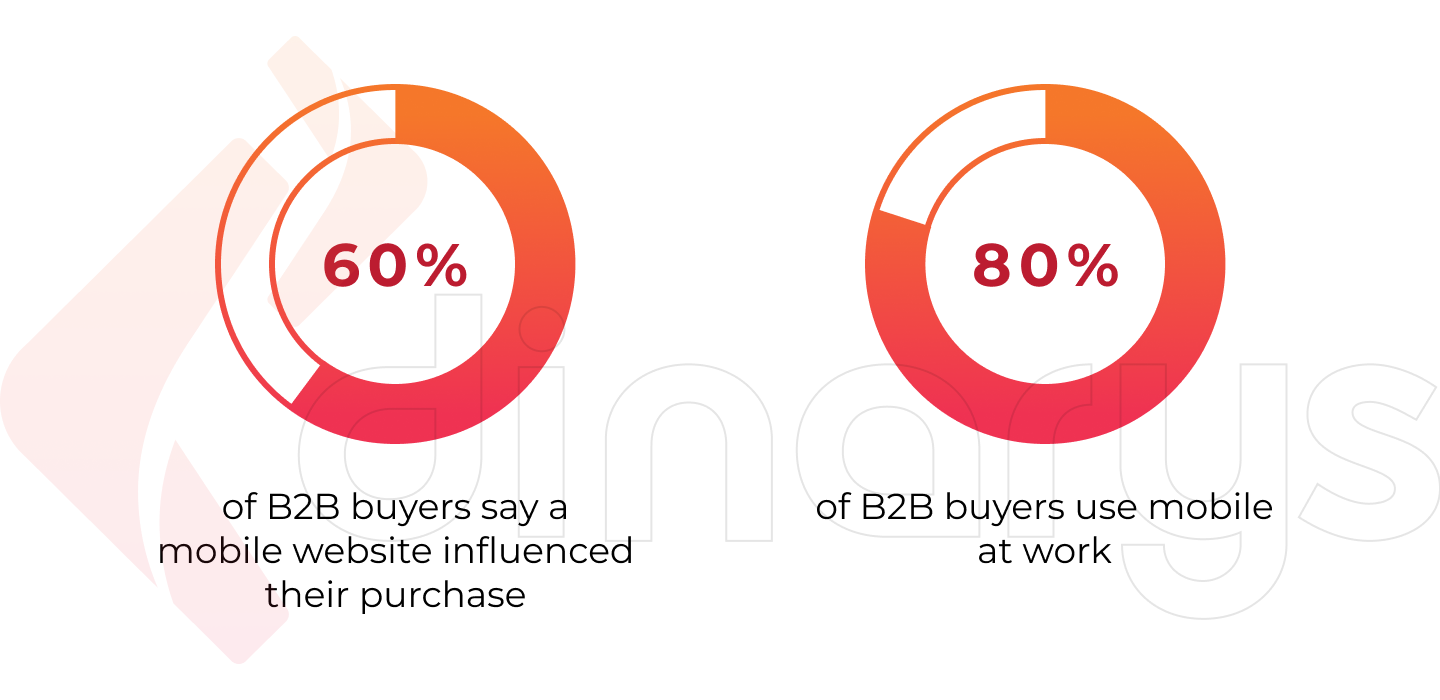
Magento Commerce offers a mobile-centric design and includes the next-generation PWA Studio. Magento PWA development provides a flexible and responsive mobile design with an application interface. What will this offer B2B buyers? For example, shoppers can scan a barcode to reorder an item, receive push notifications about the current order status, and even receive discounts on their email address.
Reason 3: Modern and secure architecture
Given how rapidly technologies are changing in the modern world, every business must constantly modernize and keep up with the times to succeed among competitors. In addition to modernization, you also need to consider that the number of hacks on the Internet will grow exponentially. You need to make the platform less vulnerable to intruders. The Magento platform does that very well. Owing to the fact that this platform is built on modern and secure architecture, you can protect the data of your B2B users thanks to PCI and GDPR compliance, maintain your reputation, and keep your website safe.
Read our blog for more information on PCI and GDPR compliance and why it is critically important for your business.
Reason 4: You can build an Amazon-like B2B marketplace on Magento Commerce.
Every second person knows about the giant platform Amazon and dreams of repeating this crushing success. With Magento, this is not a dream but a real possibility! Research shows that 87% of B2B shoppers shop regularly in B2B marketplaces. By 2023, at least 70% of corporate marketplaces will serve B2B transactions.
Therefore, creating a B2B platform now, more than ever, can lead your business to success and prosperity. But the main thing is to choose a flexible, scalable trading platform that will provide maximum convenience for your users—a platform like Magento. Magento Commerce’s flexibility, security, and rich feature set make it the excellent foundation for a dedicated digital marketplace.
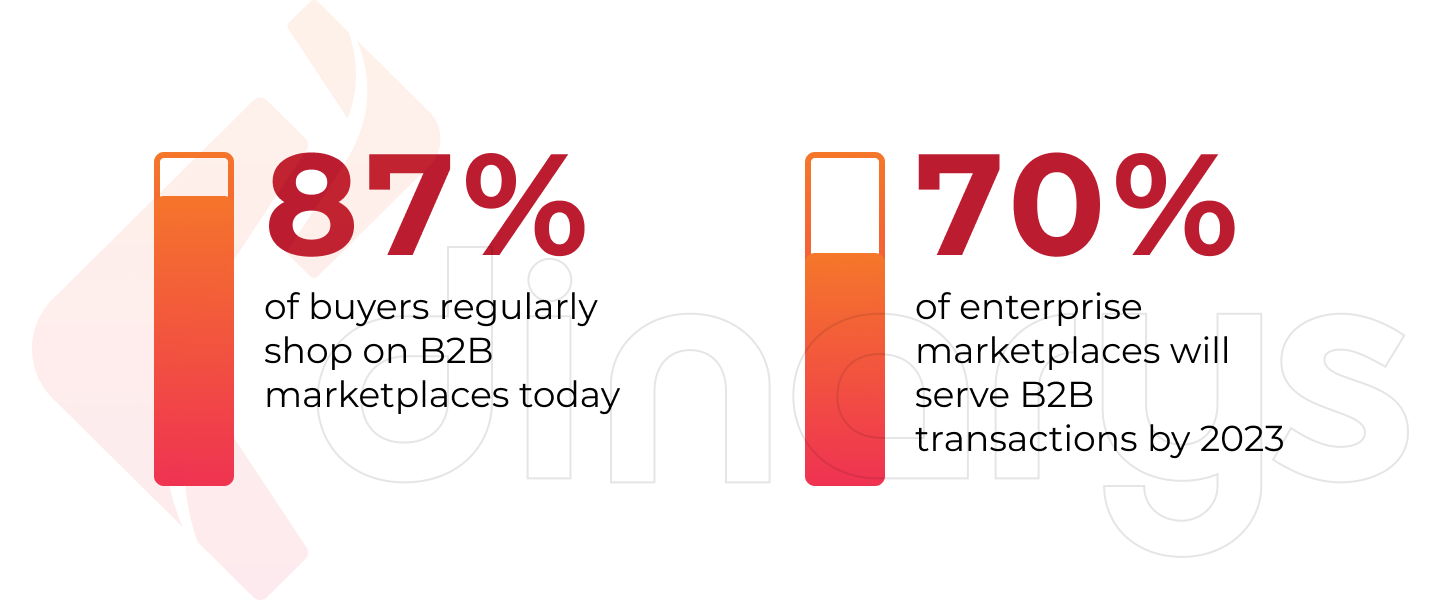
How many e-commerce companies opt for Magento?
What, if not a platform’s usage statistics, can best tell about its popularity? Magento has been on the market since 2008 and has been able to win the hearts of many business owners and users. For six years, Magento has not left the leading position in the e-commerce market. So—drumroll, please—we bring you impressive statistics and facts about what this platform has been able to achieve in more than 10 years since its inception.
- More than 270,000 merchants chose Magento as their business platform.
- The Magento platform supports about 1.2% of all sites on the Internet.
- In 2020, Magento’s global e-commerce sales were $224 billion.
- Large companies, such as Ford, Omega Watches, Christian Louboutin, and Bulgari, use Magento. And this is not the whole list of well-known companies that run their business on our platform. Among the major market players, Nike, Coca-Cola, GAP, Olympus, Zend Technologies, and Gant also chose Magento.
Want to know more about why companies choose Magento? Then read our article on Magento e-commerce success stories.
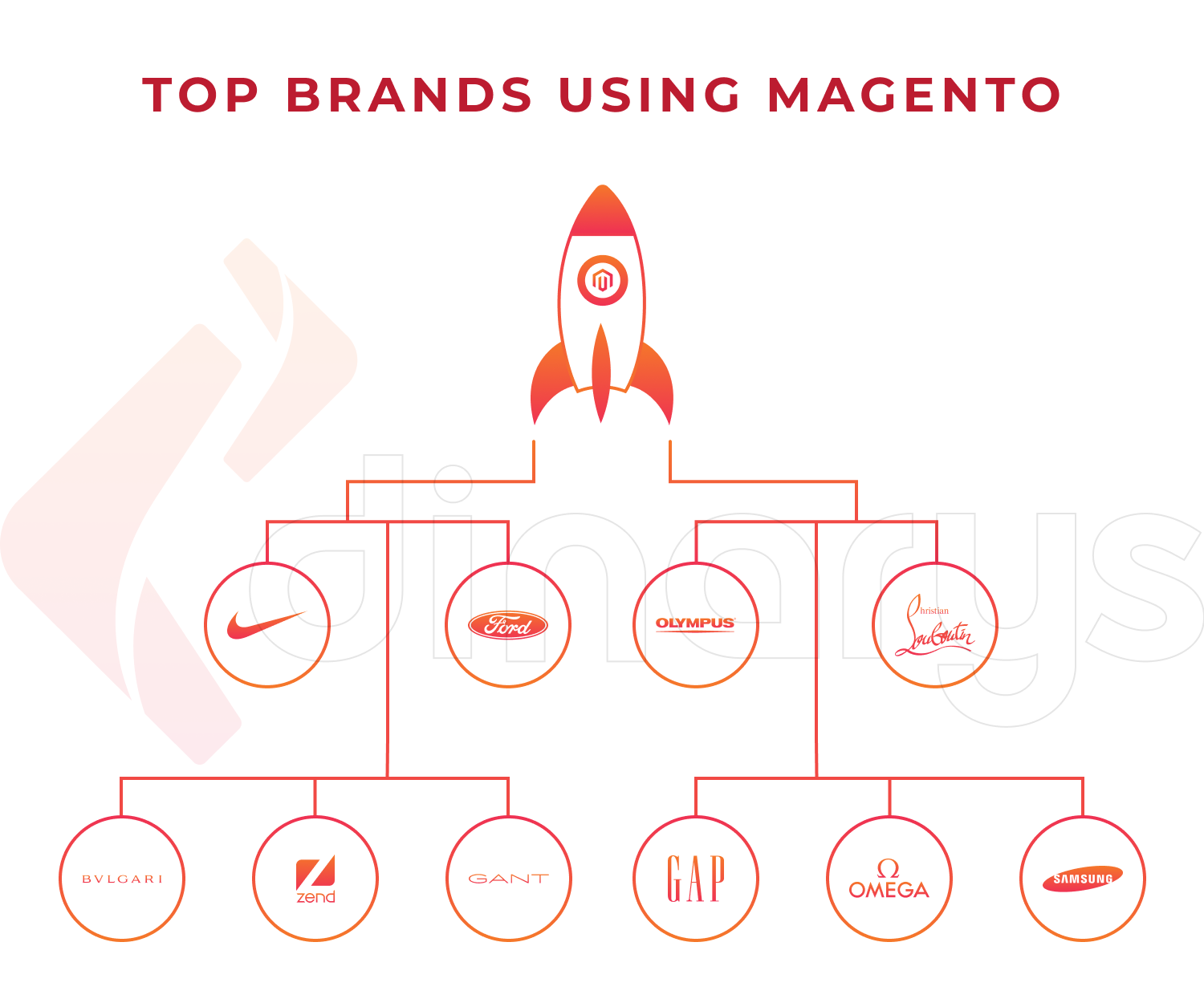
Why Upgrade Your Magento Minor Version?
With the advancement of technology and the growth of the Magento platform, there comes a time when it needs to be updated for better functionality and more flexibility. Since support for PHP 7.3 ended in December 2021 and Adobe Commerce 2.3 ends in April 2022, all business owners must update their minor versions to the latest version of Adobe Commerce. Updating to the newest version will allow your e-commerce store to be PCI-compliant and have access to current security updates, new release support, and even a free page builder for open source and improved security.
Delaying updating your Magento version in the short term can have long-term consequences as you build up technical debts and increase the cost of using outdated software. Therefore, we encourage every business to update its versions to align with the Adobe Commerce release calendar. In 2022, the Adobe team made every effort to simplify the Magento platform update process. How exactly? Let’s figure it out quickly.
Adobe release strategy 2022
In 2022, Adobe delivered three types of releases: patch, security patch, and feature releases. But to understand the overall process of updating, let's take a look at the entire Magento release policy.
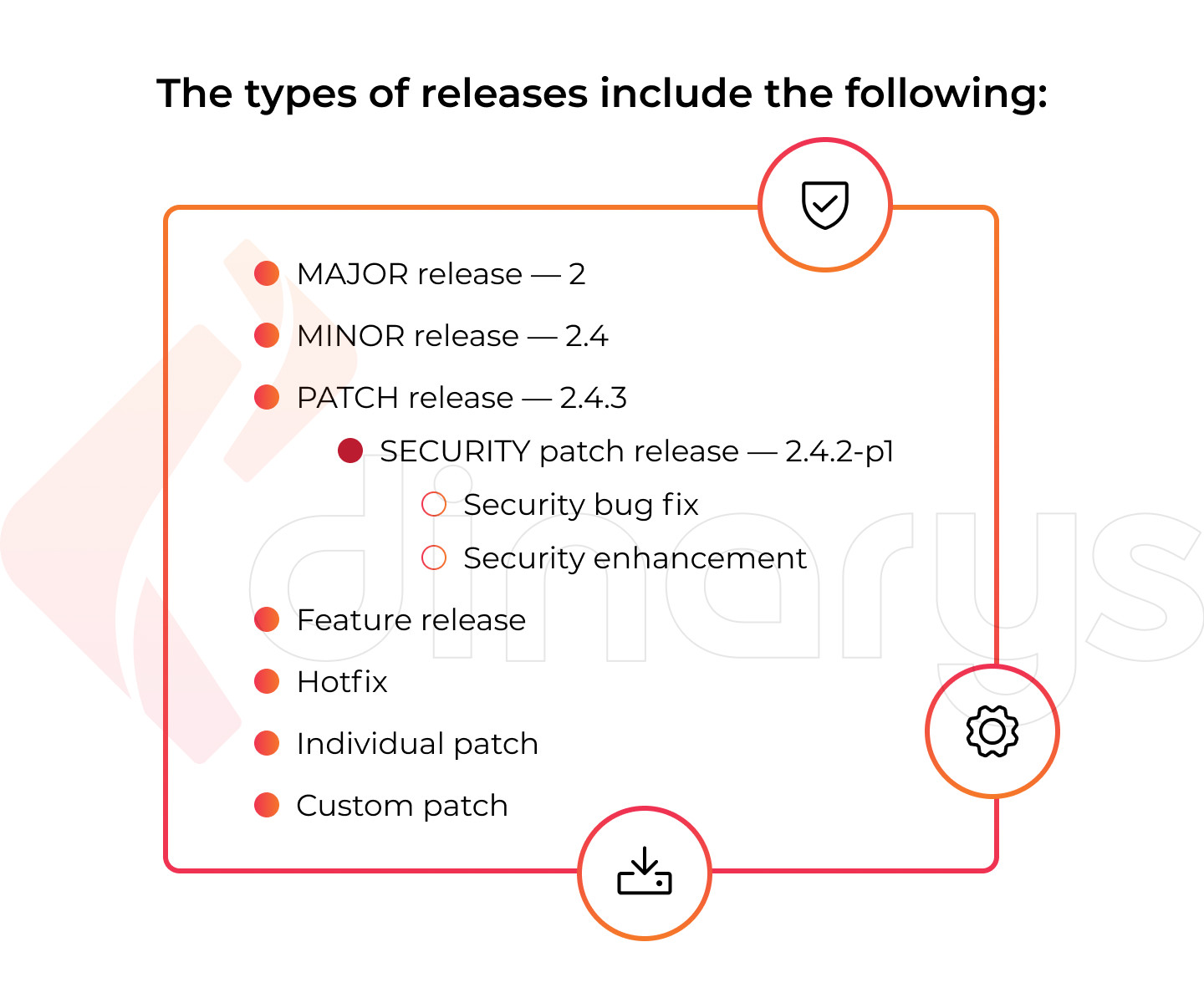
Minor release
These recommendations apply to minor releases:
- Critical changes are possible; code written for Adobe Commerce 2.2.x may no longer work with Adobe Commerce 2.3.x. For example, minor releases may support major system requirements and dependencies, such as PHP.
- Module versions may vary. For example, some module changes are introduced in a new patch, while others are presented in a minor release.
- Minor releases can include new features that may require additional work from you or your solution partner during the update to ensure compatibility.
- Minor releases may include fixes for security and quality issues.
Patch release
These are updates to the core Magento Open Source and Adobe Commerce applications, including security, compliance, performance, and high-priority quality fixes.
The following guidelines apply to patch releases:
- The latest supported minor release will receive complete fixes and feature quality improvements.
- Changes that could break the extension or code compatibility are avoided. For example, code written for version 2.2.0 should also work in version 2.2.7.
- In exceptional cases, breaking changes or additional patches may be released to address security or compliance issues or significant quality issues. These are mostly patch-level changes or, sometimes, minor changes.
Security patch release
Security patch releases are security-only updates to Adobe Commerce and Magento Open Source applications to keep merchants secure and compliant.
With security patch releases, you can improve the security of your site without the additional quality fixes and enhancements that come with the full quarterly patch release. “-pN” is appended to security fix releases, where N is the incremental fix version starting with 1 (for example, 2.3.5-p1). Security patch releases may also include fixes required to address critical issues that affect the Adobe Commerce application.
Feature release
These are feature updates provided as independent services, separate from patch releases. Examples include product recommendations and online searches, independent modules, such as PWA Studio and Inventory Management (MSI), and updates to cloud services and infrastructure.
Lets talk about itHave a project in mind?
Hotfix
Hotfixes are patches that contain high-impact security or quality fixes, such as fixes to zero-day vulnerabilities, that affect a large number of merchants. As needed, Adobe releases hotfixes for Adobe Commerce versions that are still supported and affected by critical security or quality issues. These fixes will also be included in the next planned patch release.
Individual patch
Individual hotfixes contain minor corrections for a specific issue. These fixes apply to supported minor versions of Adobe Commerce. Adobe releases individual fixes for Adobe Commerce as needed following the Adobe Software Lifecycle Policy.
Custom patch
A custom patch is created by non-Adobe personnel to fix an issue or modify the Adobe Commerce code for various reasons. Custom patches are delivered using the Quality Patches Tool.

The difficulty of updating has been reduced in new releases, and innovations have accelerated. The following table shows the dates of the planned releases (dates are subject to change). Adobe is offering two full patch releases in Q1 and one in Q3. To make life easier during the peak sales season, Magento Commerce owners will have another security patch release in Q4.
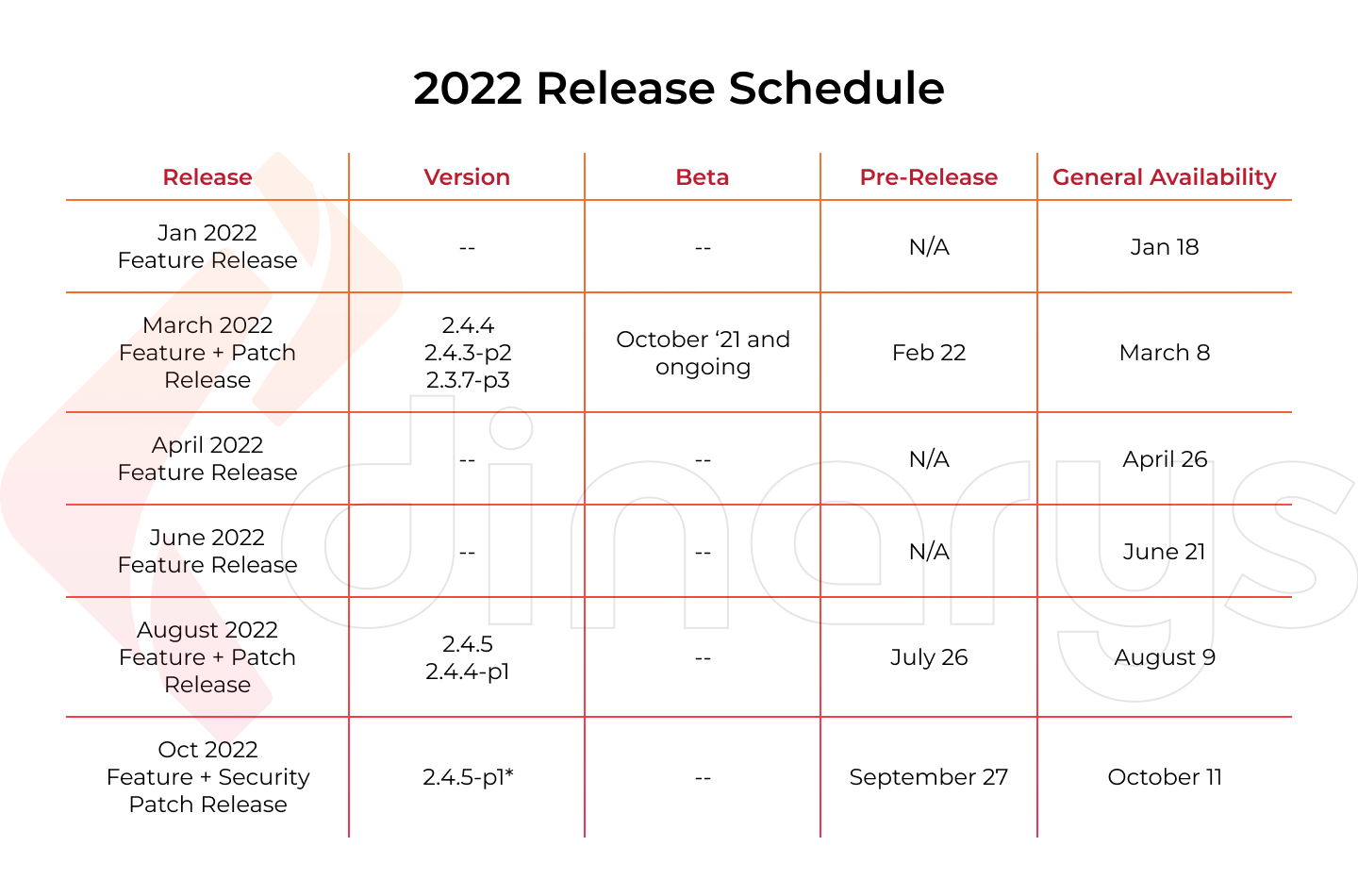
What will be up-to-date in new version releases?
So, how will the new releases delight users and business owners, and what new features and functionalities will the latest version update provide?
Security updates
We think it’s no secret to anyone how important confidentiality and security are to your business. However, after updating to the new version to increase productivity and orders, your platform will have to withstand a high influx of customers and ensure the safety of their data and the security of your online store as a whole.
Magento will provide higher security with the new releases by handling session IDs. This will be possible by preventing unauthorized users from performing actions as authorized users. The new version will also restrict administrator access to media gallery folders to prevent indirect deletion of .htaccess files and will lower the threshold for complex GraphQL queries to prevent DOS attacks. In addition, custom variable checks have been added to the new version to avoid dangerous HTML tags and attributes.
PWA Studio 12
The new version of the releases will feature PWA Studio 12. Thanks to this Magento PWA, you can forget about spinning wheels for slow page loading. Now, when the page is loading, users will see a flickering effect that animates the loading elements of your page layout, thereby improving the user experience by letting the buyer know what to expect after the content has loaded. In addition, the “Add to cart” button will be available on the category list pages in the new version, stimulating conversions and making the shopping process more manageable. Finally, PWA Studio 12 will improve SEO best practices and metrics as measured by Google Lighthouse.
You may also like Magento PWA - an Advanced Solution for Boosting UX of Your Magento Store.
Live Search update
Thanks to the Live Search update, the time for registering and re-indexing the catalog is drastically reduced, which means that the search results on your e-commerce site will provide the most relevant and up-to-date information about your products in the catalog. This is accomplished by improving the relevance of the search by introducing partial word searches alongside total word searches. The Live Search feature manages reports tailored for unique searches, zero results, and top-rated products.
Page Builder is now free for Open Source
Page Builder is a Magento extension for creating content by dragging and dropping pre-built controls. Adobe refers to these controls as "content types." The available content types are shown in the Page Builder menu.
These content types provide several key features, including
- Drag-and-drop functionality for content creation.
- Preview of how the content will look in the storefront in real-time.
- Form editors for entering and customizing content.
Previously, Page Builder was a premium feature. However, since version 2.4.3, Page Builder is also available for Magento Open Source. With this change, merchants who start using the open-source Magento benefit from the easy-to-use WYSIWYG Page Builder content creation tool and have an easier path to upgrading to Adobe Commerce as their business grows.
What Impacts an Upgrade and How to Plan It?
The development horizon is limitless. In particular, for some segments, such as e-commerce, demand is dynamic, customers expect more, server problems require upgrades, and much more. To handle challenges and maintain long-term relationships with your customers, e-commerce sites need updating. Therefore, it’s important to know when the best time to upgrade your Magento e-commerce platform is and how to do it right to strengthen your online business.
What affects the upgrade of your Magento version?
When updating, it should be understood that certain variables affect the complexity of the update. For example, the level of effort required to update your Adobe Commerce platform depends on the following factors:
- How was your website created? The complexity of your update depends on the amount of work and the installed third-party modules.
- Skipping updates. If you do not upgrade your Magento version and neglect this process, it can be quite problematic and expensive when you decide to upgrade. On the other hand, if you update regularly, you shouldn’t have any problems and will save time and money.
- Type of update. The complexity of the update will be determined depending on its type. For example, if you are upgrading from 2.3.x to 2.4.0, that upgrade is more extensive than an upgrade between patch releases (for example, 2.4.2 to 2.4.3). Security updates are the easiest type to implement.
Suppose you are working on a project that is already under development. In that case, updates are an opportunity to improve the quality of your code and settings and to optimize it for future updates. The time you invest today will be saved in the long run. So, let's find out how to update the Magento 2 minor version. We know you can’t wait any longer!
Lets talk about itHave a project in mind?
3 Ways to Upgrade Your Magento Store
Adobe is constantly striving for improvement, balancing the simple with the complex in its Magento versions, and delivering faster improvements and new business features that e-commerce stores need.
There are three surefire ways to upgrade your Magento version. The first two methods work for all Magento 2 versions, while the third is only for Adobe Commerce or Cloud.
Before the update, we recommend preparing your server infrastructure for the latest Magento version.
- Check the PHP version and update PHP to 7.4 (or 7.3, as the latest Magento works with >= 7.3).
- Install Elasticsearch if it isn’t installed since MySQL is no longer used for search.
Method 1 – Provides the best quality of code and a stable solution
In our opinion, this is considered one of the best ways to update your Magento version. During the update process, the code is prepared and analyzed for the new version to avoid errors during work. This allows avoiding numerous bugs that may arise while using Magento, which can be detected after a certain time in case of ordering, inventory management difficulties, etc.
Although this update takes more time, it allows developers to find hidden bugs and fix them.

First, you should prepare your Magento 2 site custom code for the new release version to implement this solution. To do this, developers should review the module release information, check the documentation for Magento 2, and examine changes in modules. After that, the developer proceeds directly to the update. To update the Magento version in this way, you need to do the following:
Get module versions:
$ composer show --all < vendor >/< name >
Update module:
$ composer update vendor/module-name
Update module with version:
$ composer require vendor/module-name ^x.x.x
Sometimes, the module vendors don’t update the information of custom modules. Therefore, a developer must check the third-party module and fix all errors. After the modules-update, the developer checks the code and adds fixes to the third-party modules, if necessary. The developer should also update the Magento theme if there are new versions.
The biggest part of the update comes next. Here, a developer or a team of developers will update the theme and custom modules and implement custom changes. First, they have to research all the details of the customization and add new changes to the new Magento 2 version. After that, the Magento 2 version can be updated.
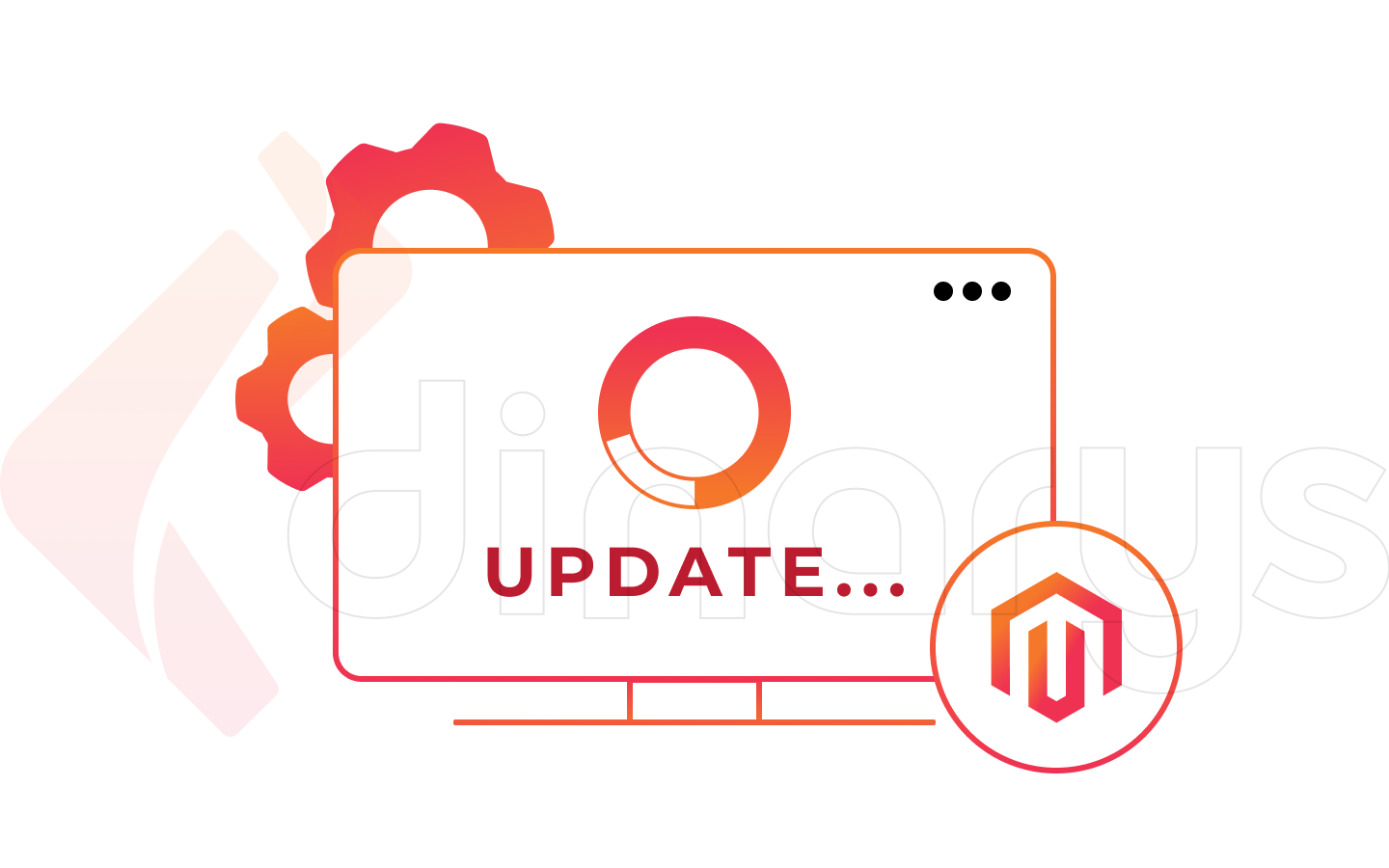
The next steps will be carried out in all update methods, without exception.
1. Remove the main Magento 2 package from composer.json.
$ composer remove magento/product-community-edition --no-update
2. Add a new version of the leading Magento 2 package.
$ composer require magento/product-community-edition=2.4.0 --no-update
3. Apply updates.
$ composer update
4. Clear the var/ and generated/ subdirectories.
$ rm -rf var/cache/* var/page_cache/* generated/code/*
5. Update the database schema and data.
$ bin/magento setup:upgrade
After that, check the new version and conduct a smoke test.
This update will take many hours of development, but in the end, the customer has a stable version of the Magento 2 release.
Method 2 – The quick one: Chicky bricky and production

The second version implies updating first and then bug fixing. This method is suitable for small- to medium-sized Magento 2 e-commerce projects or projects that are willing to set aside a small budget to upgrade their store. However, using this method, there is the possibility of encountering bugs while the store is running. So, if you have numerous products, it is better to update using the first method.
Developers should run the new release of Magento 2 and inform the customer about bugs on the site in the following way:
- Prepare a server environment.
- Update the Magento 2 version as in Method 1.
- Prepare a third-party modules list to update.
- Update critical third-party modules.
- Fix bugs after updating M2.
- Test fixed version on a test server.
- Conduct deployment to a production server.
Many customers want to upgrade this way because it’s fast enough. However, quick is not always of high quality. The other problem is an estimation. Sometimes, Magento 2 developers can’t estimate the renovation degree without having access to the entire research project before the Magento 2 update. Comprehensive research takes many hours. In this case, Method 1 should be used instead.
Evaluation should be performed as follows:
- Prepare the server environment, and update the Magento 2 core.
- At the request of the client, study the quick update of third-party modules.
- Collect bugs and estimate how long it will take to fix them.
- Prepare to deploy the new Magento 2 release.
This method can also be effective in the long run, but only if the percentage of errors that appear is minimal. Many development teams that update Magento 2 using this method do so without communicating with the client. At Dinarys, we still believe that communication with the client contributes to the best results.
Method 3 – Adobe Commerce only
In this method, we use the Upgrade Compatibility Tool. It is a command-line interface (CLI) tool that analyzes the settings in a specific Magento Commerce instance and identifies code that may need to be updated before upgrading. In its alpha release, the Upgrade Compatibility Tool can check the Magento PHP APIs and GraphQL schema to identify potential issues that need to be resolved before the upgrade, with additional upgrade coverage planned for future releases.
While the purpose of the Upgrade Compatibility Tool is to make the upgrade process smoother, it does not diminish the need for regression testing.

Upgrading using the Upgrade Compatibility Tool proceeds as follows:
- Set up the Upgrade Compatibility Tool and prepare a list of issues.
- Research other problematic parts in custom modules (if requested by the client).
- Approve the list of issues with the client.
- Perform maintenance for the approved issues.
- Run regression tests (quality Assurance should confirm that all tests are green and approve a smoke test).
- Pre-release fixes.
- Release.
The composer module update remains the same as in the previous paragraphs. The Upgrade Compatibility Tool does some release reviews, which can help vendors conduct the Magento update by themselves. Still, it’s challenging for a person who is not strong in development. Although this is an excellent way to analyze all bugs and error points in the code during an upgrade, it has drawbacks. This method of updating the Magento version does not replace the developer’s research on the project and can only be used for Adobe Commerce.
Lets talk about itHave a project in mind?
Post-upgrade testing: What to consider
Testing is one of the most critical and time-consuming processes after a version update. Therefore, this process is in great need of automation.
While testing the version of your Magento online store, notify users about it using a maintenance page.
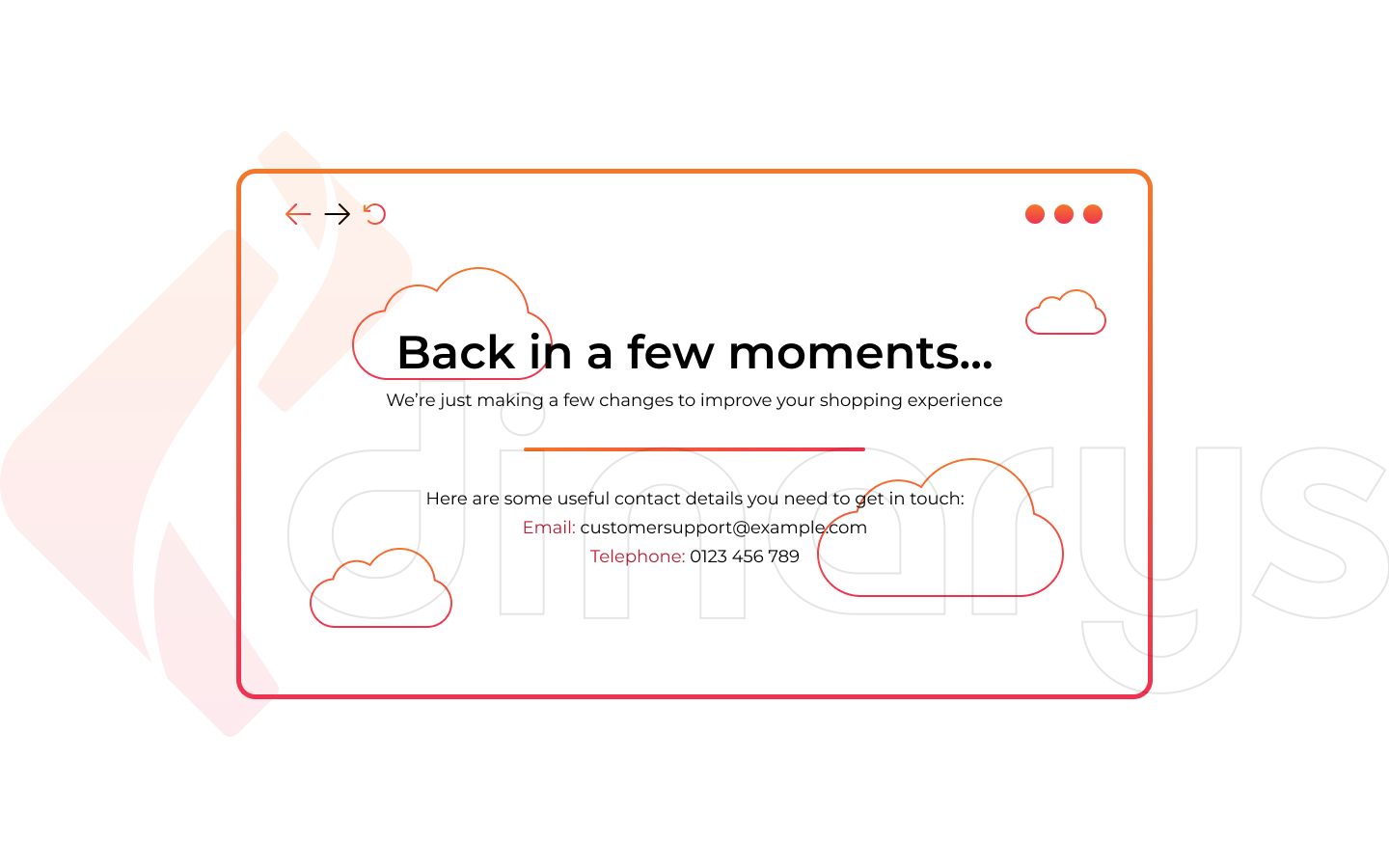
Preparing this page in advance allows you to communicate with your customers, notifying them that work is happening in the background. This page should be visible for only a few minutes, although you might need to use it longer in case of a problem. Having the appropriate content and design for your maintenance page will give your users a good experience, even when your store is unavailable.
Update Your Magento Minor Version with Dinarys
Magento platform version updates are a way to keep your site secure. In addition, regular code optimizations associated with updates positively affect performance and functionality—you don’t need to do performance optimizations as often, as the updates mainly cover it.
Last but not least, updates can provide new opportunities. It is always best to use as many of Magento’s built-in functionalities as possible and reduce the number of third-party modules or other tweaks on the website. This is worth doing in order to avoid conflicts and performance issues that can be caused by expanding the functionality of the website if done incorrectly.
The potential risks are high in two cases: if your project is taken on by a team of unskilled developers and if your Magento website includes numerous third-party extensions (usually, not all modules or themes are compatible with the next version of Magento).
Yes, updating Magento is quite a difficult task, so we recommend that you contact professionals, such as Magento 2 development company as Dinarys. We know how to update your website, taking into account all the features of your business and potential risks.
Contact us to upgrade your Magento 2 minor version, and always stay afloat and competitive.
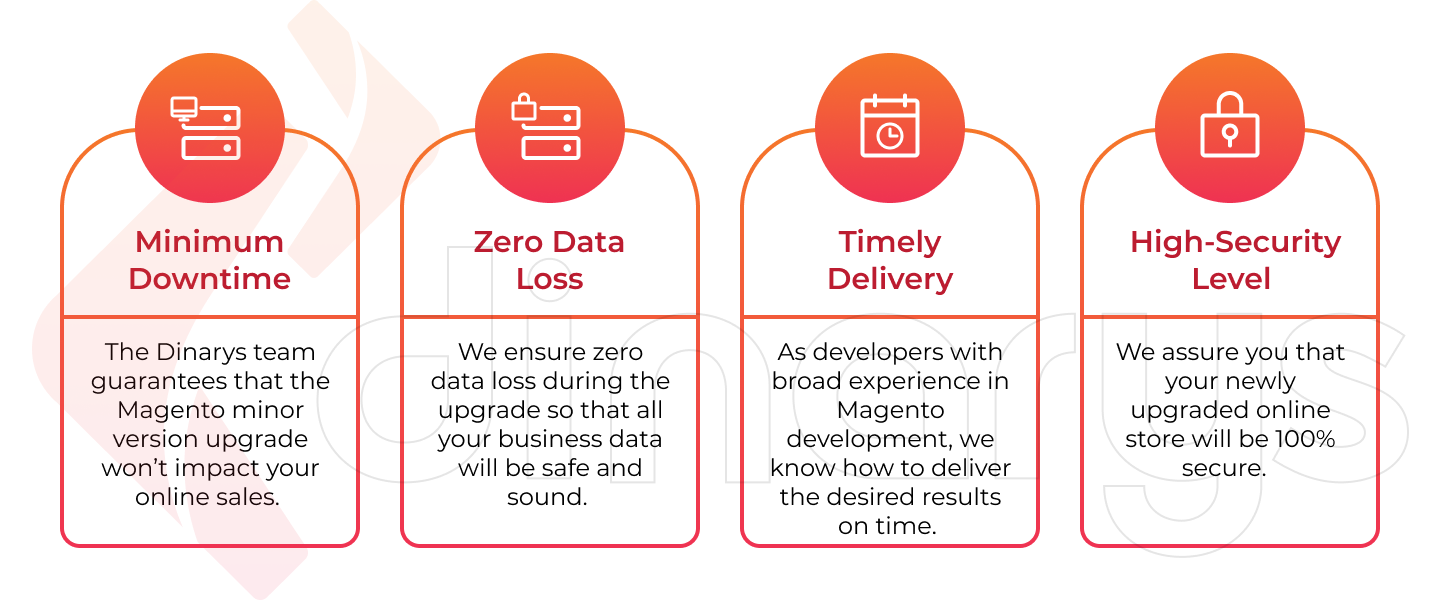
FAQ
Delaying updating your Magento version in the short term can have long-term consequences as you build up technical debts and increase the cost of using outdated software. Therefore, we encourage every business to update its versions to align with the Adobe Commerce release calendar.
In 2022, Adobe delivered three types of releases: patch (these are updates to the core Magento Open Source and Adobe Commerce applications, including security, compliance, performance, and high-priority quality fixes); security patch (security patch releases are security-only updates to Adobe Commerce and Magento Open Source applications to keep merchants secure and compliant); and feature releases (feature updates provided as independent services, separate from patch releases.
Several factors affect the extent and difficulty of updating your version of Magento. Updates are most impacted by third-party modules and how your site was created, skipping updates and type of update.
Lassen Sie Profis Ihre Herausforderung meistern
Unsere zertifizierten Spezialisten finden die optimale Lösung für Ihr Unternehmen.



